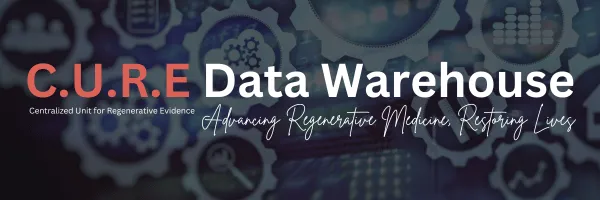Guidance and Tools for Those with Rheumatoid Arthritis
Rheumatoid Arthritis (RA) - a complex autoimmune condition impacting more than just joints. From the eyes to various organs, RA can be widespread, but there's hope. Learn about the powerful treatments available to manage and mitigate its effects.
Living with rheumatoid arthritis (RA) is a unique experience for each individual. Whether you're newly diagnosed or have been managing RA for years, having the right information and support can make a world of difference. Understand the diagnosis process, explore treatment options, and tackle daily obstacles. Here, you'll discover a supportive community of fellow RA warriors, tips to remain active and manage your condition, and avenues to champion not only for yourself but for others too."

Non-Invasive Collection of PDPA: Ethical Considerations and Benefit
Placenta Derived Protein Array (PDPA) is collected from the placenta after childbirth in a process that is entirely non-invasive for both the mother and baby. The placenta, a temporary organ that nourishes the baby during pregnancy, is typically discarded after delivery. This makes it an ideal source of valuable proteins, growth factors, and multipotent cells without the need for any additional medical procedures.
The collection process occurs after the baby is born and the placenta is safely delivered. Healthcare providers can collect the placenta with the informed consent of the mother. Since this tissue is naturally expelled during the birth process, the mother and baby experience no extra discomfort or risk from the collection, making this process significantly less invasive than other methods used to obtain regenerative cells or tissue.
Ethical Considerations
Informed Consent:
One of the most important ethical aspects of PDPA collection is ensuring that the mother gives informed consent. She must be fully aware of how the placental tissue will be used, and her decision to donate should be made voluntarily without any pressure or incentives. It’s crucial that the donation process is transparent and that she understands the potential medical applications of PDPA.
Privacy and Confidentiality:
Protecting the privacy and confidentiality of the donor is essential. Any identifying information related to the placental tissue donation must be kept confidential to ensure that the mother’s personal data is protected. This upholds the ethical principle of respect for the donor's autonomy.
Ethical Sourcing:
Since the placenta is a naturally discarded organ, using it for therapeutic purposes avoids many ethical dilemmas associated with other cell sources. There is no harm to the mother or child in the collection process, and the tissue would otherwise go to waste. This makes PDPA a sustainable and ethical option for medical applications.
Comparison with Other Tissue Sources
Bone Marrow Collection:
Invasive Procedure: Collecting stem cells from bone marrow requires a surgical procedure in which a needle is inserted into the donor's hip bone to extract the marrow. This procedure often requires anesthesia and can cause discomfort or pain, along with a recovery period for the donor.
Higher Risk: The invasive nature of bone marrow collection increases the risk of infection, pain, and complications during recovery. In contrast, PDPA collection does not carry these risks since it does not involve surgery or additional medical procedures.
PDPA Advantage: The non-invasive process of collecting PDPA is a safer and more convenient option, with no harm or recovery time for the donor.
Adipose Tissue Collection:
Liposuction Required: To harvest stem cells from adipose (fat) tissue, the donor typically undergoes liposuction, which involves the use of anesthesia and surgical removal of fat from areas like the abdomen or thighs. This procedure carries its own risks, including pain, bruising, and potential infection.
Potential Side Effects: Like bone marrow collection, adipose tissue harvesting can result in discomfort and requires recovery time for the donor. The invasiveness of liposuction is a barrier for some patients.
PDPA Advantage: Unlike adipose tissue collection, PDPA is sourced from the placenta, which is naturally expelled after childbirth, making it a much simpler, risk-free alternative.
Benefits of PDPA Collection Over Other Sources
Non-Invasive and Safe: The greatest benefit of PDPA collection is that it is entirely non-invasive. There is no need for surgery, anesthesia, or recovery, which contrasts sharply with the collection methods for bone marrow or adipose tissue. This makes it a safer and less complicated option for obtaining bioactive materials.
Sustainable and Ethical: Since the placenta is a naturally discarded organ, it provides a plentiful and sustainable source of multipotent cells, growth factors, and bioactive proteins. This ethical sourcing method avoids the issues of commodifying human tissues or subjecting donors to invasive procedures.
Minimal Immune Response: Placental tissue is known for its low immunogenicity, meaning it is less likely to trigger an immune response when used in treatments. This is another advantage over bone marrow or adipose tissue, which may have a higher risk of rejection when used in therapies.
What Is PDPA and How Is It Collected?
Placenta Derived Protein Array (PDPA) is a rich source of bioactive molecules and proteins collected from the placenta after childbirth. These molecules include growth factors, cytokines, and multipotent cells, which have shown potential for regenerative medicine, tissue repair, and immune modulation. PDPA contains key proteins such as:
Growth Factors (e.g., VEGF, FGF, TGF-β) that promote cell growth and tissue regeneration.
Cytokines (e.g., interleukins, TNF-α) that help regulate inflammation and support immune response.
Collagen and Enzymes like Matrix Metalloproteinases (MMPs) that aid in wound healing and tissue restructuring.
Non-Invasive Collection Process
PDPA is collected through a non-invasive process after childbirth, when the placenta is naturally expelled. The collection involves no harm or discomfort to the mother or baby, as the placenta is typically discarded after delivery. This makes PDPA collection simple, safe, and ethically sound, especially compared to more invasive tissue collection methods like bone marrow or adipose tissue harvesting, which require surgical procedures and recovery time.
Ethical Considerations of PDPA Collection
Informed Consent:
It is essential that mothers fully understand the process and purpose of placental tissue collection. Informed consent ensures that they voluntarily agree to donate the placenta without any pressure or incentives. Clear communication about how the tissue will be used and the potential applications is key to maintaining ethical standards.
Voluntary Donation:
Placental tissue donation must be entirely voluntary, without any coercion or expectation of financial compensation. It is important that the donation process does not influence the medical care the mother receives or pressure her into agreeing to the collection.
Privacy and Confidentiality:
The privacy of the donor must be respected, with any personal or medical information related to the donation kept confidential. Ensuring that identifying information remains private protects the mother’s autonomy and maintains trust in the donation process.
Non-Exploitation:
There is a need to ensure that the collection of placental tissue does not disproportionately target vulnerable populations or those in economically disadvantaged positions. The ethical collection of PDPA requires a fair, transparent process without the exploitation of any group.
Ethical Sourcing:
The placenta is a naturally discarded organ after childbirth, making its use in regenerative medicine more ethical than tissues obtained through more invasive methods like bone marrow or adipose tissue harvesting. Using a discarded organ avoids the ethical dilemmas associated with using embryonic or fetal tissues, as well as the physical burden placed on donors in other tissue collection methods.
By adhering to these ethical considerations, the collection of PDPA can be conducted in a way that respects the rights and dignity of donors while providing a valuable resource for medical advancements.
Benefits of PDPA Over Other Sources
Non-Invasive Collection:
PDPA is collected from the placenta after childbirth, a process that is entirely non-invasive and painless for both the mother and baby. Unlike bone marrow and adipose tissue, which require surgical procedures or invasive methods like liposuction, PDPA is collected from a naturally expelled organ, eliminating the need for anesthesia, recovery, or any additional medical intervention.
Ethical and Abundant Source:
The placenta is typically discarded after delivery, making it a readily available and ethically sourced material. Using this otherwise wasted resource is a sustainable and ethical alternative to harvesting other tissues, which may raise concerns about donor exploitation or the commercialization of human tissues. Placental donation does not involve harm or exploitation.
Rich in Bioactive Molecules:
PDPA contains a wide array of bioactive molecules, including growth factors, cytokines, and proteins like collagen, which are vital for tissue repair, wound healing, and immune modulation. These molecules promote cell growth and regeneration, making PDPA a valuable tool in regenerative medicine. Other sources, such as bone marrow or adipose tissue, may not provide the same diversity or concentration of healing molecules.
Lower Risk of Immune Rejection:
Placental tissue has low immunogenicity, meaning it is less likely to trigger an immune response in recipients. This is a significant advantage over other sources like bone marrow or adipose tissue, where the risk of immune rejection can be higher. PDPA’s reduced immune response makes it a safer option for regenerative therapies, especially for immune-compromised patients.
Multipotent Cells for Regeneration:
PDPA is rich in multipotent cells, which have the ability to differentiate into various cell types, such as skin, muscle, or bone cells. These cells are crucial for tissue repair and regeneration, providing a therapeutic advantage over other sources that may be more specialized or limited in their capacity for differentiation.
Convenience and Safety:
Because PDPA collection is non-invasive, it is far more convenient and safer than other methods, such as bone marrow harvesting, which involves needles inserted into the bones, or adipose tissue harvesting, which requires liposuction. The simplicity of the PDPA collection process reduces the risks associated with donor procedures and recovery time.
Medical Benefits of PDPA
Placenta Derived Protein Array (PDPA) offers a range of medical benefits due to its rich composition of bioactive molecules, proteins, and multipotent cells. These components play key roles in promoting healing, regeneration, and immune system modulation, making PDPA a promising tool in various therapeutic areas. Here are some of the major medical benefits of PDPA:
1. Tissue Regeneration
Promotes Cell Growth and Repair: PDPA contains growth factors like VEGF (Vascular Endothelial Growth Factor) and FGF (Fibroblast Growth Factor), which stimulate cell growth, encourage the formation of new blood vessels, and promote the repair of tissues like skin, muscle, and bone. This makes PDPA highly valuable for regenerative medicine applications, helping to heal damaged tissues more quickly and effectively.
2. Wound Healing
Accelerates Healing Process: The growth factors and cytokines in PDPA help to speed up the wound healing process by promoting the formation of new tissue and reducing inflammation. PDPA has the potential to be used in treatments for both chronic wounds (such as diabetic ulcers) and acute injuries, providing faster recovery and better healing outcomes.
Reduces Scar Formation: PDPA’s ability to regulate inflammation and promote tissue regeneration can also reduce the formation of scar tissue, leading to improved aesthetic and functional outcomes for patients after surgeries or injuries.
3. Anti-Inflammatory Properties
Modulates Immune Response: PDPA contains cytokines like interleukins (e.g., IL-10) that help regulate the body’s immune response. By reducing excessive inflammation, PDPA can help manage conditions where inflammation plays a central role, such as autoimmune diseases (e.g., rheumatoid arthritis) or chronic inflammatory conditions.
Potential for Inflammatory Disease Treatment: PDPA’s anti-inflammatory properties make it a potential therapeutic option for treating inflammatory diseases, helping to control symptoms and improve quality of life for patients with conditions like Crohn’s disease or psoriasis.
4. Bone and Cartilage Repair
Supports Bone Healing: PDPA’s rich growth factors can stimulate the repair and regeneration of bone tissue, making it beneficial for healing fractures or treating bone diseases like osteoporosis. It can also support bone grafts and other orthopedic procedures.
Regenerates Cartilage: The proteins and multipotent cells in PDPA have the potential to regenerate cartilage, which is often damaged in joint diseases like osteoarthritis. This could lead to new treatments for restoring joint function and reducing pain in patients with degenerative joint conditions.
5. Cosmetic and Dermatological Benefits
Skin Rejuvenation: PDPA’s growth factors and collagen-promoting properties can enhance skin regeneration and improve skin elasticity, which are key factors in anti-aging treatments. PDPA could be used in cosmetic treatments to reduce fine lines, wrinkles, and improve skin tone.
Treatment of Skin Conditions: PDPA has potential in treating dermatological conditions like psoriasis, eczema, or chronic wounds by promoting healthy skin regeneration and reducing inflammation. Its ability to support tissue repair could also benefit patients with scars, burns, or other skin injuries.
6. Immune System Support
Immune Modulation: PDPA can modulate immune system responses, potentially reducing the risk of immune rejection in transplant therapies. The low immunogenicity of placental tissue means that PDPA-based therapies are less likely to trigger adverse immune reactions, making them safer for patients, especially those with compromised immune systems.
Support for Autoimmune Disease Treatments: By calming an overactive immune response, PDPA has the potential to play a role in the treatment of autoimmune diseases such as rheumatoid arthritis or lupus, where the body mistakenly attacks its own tissues.
7. Nerve Regeneration
Neurological Repair: PDPA shows promise in aiding the regeneration of damaged nerves, potentially offering new treatments for nerve injuries, neuropathy, or neurodegenerative diseases like Parkinson’s disease. The growth factors and multipotent cells in PDPA could help repair damaged nerve cells, improving function and reducing symptoms.
8. Cardiovascular Benefits
Heart Tissue Repair: PDPA’s regenerative properties could aid in repairing heart tissue damaged by heart attacks or cardiovascular diseases. The proteins and growth factors found in PDPA can promote the growth of new heart muscle cells and blood vessels, improving heart function and supporting recovery.
Blood Vessel Formation: PDPA encourages angiogenesis, the formation of new blood vessels, which is crucial for delivering oxygen and nutrients to healing tissues. This ability could be especially beneficial in restoring blood flow to tissues damaged by heart disease or injuries.
PDPA’s rich composition of bioactive molecules, growth factors, and multipotent cells makes it a powerful tool in regenerative medicine and a wide range of therapeutic applications. From tissue regeneration and wound healing to immune modulation and bone repair, PDPA offers several promising medical benefits that can improve patient outcomes in various clinical settings. As research continues, PDPA may unlock new ways to treat chronic diseases, injuries, and even cosmetic concerns, providing safer and more effective treatments compared to traditional methods.
Have a question?
We're Here to Help
By providing my phone number, I agree to receive text messages from the business.


